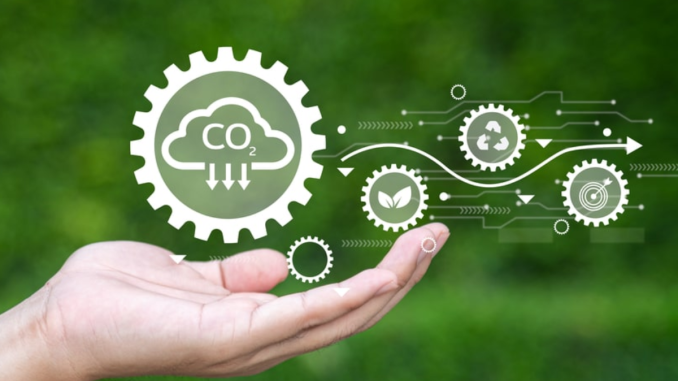
🔍 Introduction: Sustainability Meets Profitability
Gone are the days when sustainability was merely a branding tactic. In 2025, it’s a business imperative. Companies embracing eco-friendly operations, ethical sourcing, and carbon reduction strategies are not only improving their reputation — they’re also seeing significant financial returns.
From startups to Fortune 500s, sustainability is no longer a cost center — it’s a growth engine. In this article, we explore how green practices are reshaping industries, enhancing brand loyalty, and unlocking new revenue streams.
💼 1. The Business Case for Going Green
Environmental, Social, and Governance (ESG) initiatives are now key metrics in investor evaluations. Businesses with strong sustainability records attract:
-
More investment from ESG-focused funds
-
Higher customer loyalty and brand trust
-
Cost savings via energy efficiency and waste reduction
A 2025 report by Bloomberg Green shows companies with ESG strategies outperform the S&P 500 by 35%.
Example:
Unilever’s “Sustainable Living Brands” grew 69% faster than the rest of its portfolio in 2024.
🏭 2. Eco-Efficiency = Profit Efficiency
Green operations aren’t just good for the planet — they reduce operational costs:
-
Energy Efficiency: LED lighting, solar panels, and AI-driven smart HVAC systems cut utility bills by 20–40%.
-
Waste Reduction: Circular supply chains reduce raw material costs and create new resale opportunities.
-
Water Conservation: Smart water systems lower consumption by up to 60%.
“Sustainability is the new Lean.” — Harvard Business Review
🌐 3. Sustainable Branding Wins Consumer Trust
Today’s consumers — especially Gen Z and Millennials — are highly values-driven. 79% say they prefer buying from eco-conscious brands, even if it costs more.
Top Green Branding Practices:
-
Recyclable/compostable packaging
-
Transparent ingredient sourcing
-
Carbon footprint labeling
-
Ethical labor practices
Case Study:
Patagonia’s “Don’t Buy This Jacket” campaign encouraged conscious consumption — yet increased sales by 30% through brand loyalty.
💰 4. ESG Investments Are Skyrocketing
In 2025, ESG investing isn’t just a niche — it’s the mainstream.
-
Over $53 trillion in global assets are now managed under ESG principles.
-
Governments and institutions are pushing for mandatory ESG disclosures.
Example:
BlackRock, the world’s largest asset manager, has committed to prioritizing sustainability in 100% of its investment decisions.
Companies with strong ESG performance have lower volatility and higher long-term returns.
🧠 5. Innovation Through Sustainability
Sustainability drives product innovation. As businesses look to cut emissions and minimize waste, they’re creating:
-
Biodegradable materials
-
Electric mobility solutions
-
Clean energy technologies
-
Low-emission manufacturing methods
Example:
Tesla’s push for battery recycling is creating an entire sub-industry in green mining and closed-loop energy systems.
Innovation thrives when necessity meets purpose.
📦 6. Circular Economy: The Future of Business Models
The circular economy is replacing the traditional linear “take-make-waste” model. Companies now design products with repairability, reusability, and recyclability in mind.
Business Model Examples:
-
Clothing brands offering repair services or resale platforms (e.g. Levi’s SecondHand)
-
Electronics with modular designs (e.g. Fairphone)
-
Furniture-as-a-service (e.g. IKEA’s rental model)
In 2025, “waste” is no longer waste — it’s a revenue stream.
🚚 7. Green Logistics & Supply Chains
Sustainability efforts go beyond the storefront. Supply chains are undergoing major green overhauls:
-
Electric delivery fleets reduce emissions and logistics costs
-
Blockchain traceability ensures ethical sourcing
-
Local sourcing minimizes transportation pollution
Example:
Walmart’s Project Gigaton aims to reduce 1 billion metric tons of emissions from its global supply chain by 2030 — and is already ahead of schedule.
🌍 8. Government Policies & Consumer Pressure Fuel the Shift
Legislation is accelerating the adoption of sustainability:
-
Carbon taxes and emissions regulations are tightening
-
Countries are requiring sustainability reporting standards
-
Green incentives and subsidies support eco-innovation
On the flip side, consumers are becoming watchdogs:
-
Social media amplifies brand missteps (greenwashing)
-
Review platforms include sustainability metrics
-
Customers demand proof of action, not just promises
“If you’re not measuring it, you’re not managing it.”
📈 9. How Small Businesses Can Go Green in 2025
You don’t have to be a multinational to be eco-friendly. Simple steps can include:
-
Partnering with green suppliers
-
Offering carbon-neutral shipping
-
Digitizing paperwork and reducing physical waste
-
Joining sustainability certifications like B Corp or 1% for the Planet
Bonus: Many customers actively support small businesses with a sustainability mission.
🔐 10. Measuring Impact: KPIs That Matter
Sustainability must be measurable. Popular green performance indicators include:
-
Carbon footprint (CO2e)
-
Water usage (liters/unit)
-
Energy intensity (kWh/unit)
-
Waste diversion rate
-
Social impact scores
Tools to Use:
-
GRI Standards
-
SASB frameworks
-
AI-driven ESG dashboards
“What gets measured gets managed. What gets managed gets improved.”
💡 Conclusion: Green is No Longer Optional — It’s Profitable
2025 has made one thing clear: Sustainability isn’t just a moral duty — it’s a market advantage. Companies that align profitability with purpose are attracting better talent, loyal customers, and long-term investors.
Whether you’re a startup or a global brand, the future of business is green, transparent, and impact-driven.
“In the race for relevance, the most sustainable companies will win.”